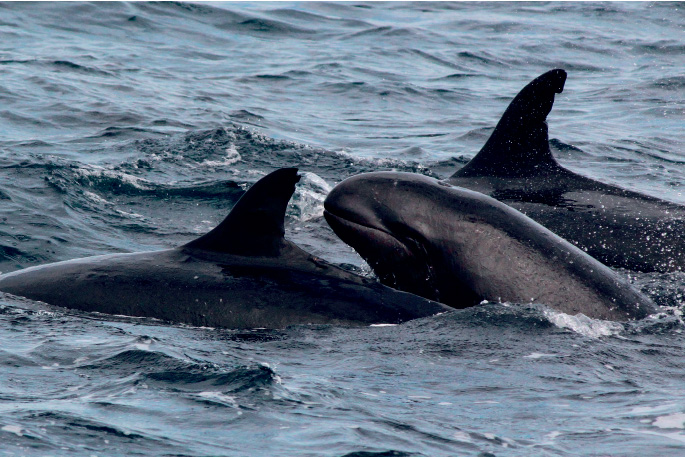It’s the time of the year that we expect the return of one of New Zealand’s rarest whale species, the false killer whale.
This little known (and unfortunately named) whale enters the coastal waters of northern New Zealand at the beginning of summer and usually stay until the end of autumn. The Bay of Plenty appears to be a very important area for these charismatic whales, especially in summer.
The first reports are usually received from around White Island in late November or early December and the whales appear to move gradually further inshore, presumably following their favourite prey of game fish such as tuna. They are often sighted around Mayor Island, Penguin Shoals and the Alderman Islands from late December to February before they slowly work their way further north towards the outer Hauraki Gulf and the Northland coast.
Researchers from the Far Out Ocean Research Collective have been studying this rare species in New Zealand waters for over 15 years and have found out that they form part of a small population of around 200, with the same individuals returning to our coastal waters year after year. It is still not known where they spend the winters.
Interestingly, false killer whales appear to be in constant company of large numbers of offshore bottlenose dolphins. The exact reasons for this association are still not fully understood but joint hunting of fish seems to be one of the driving factors.
The biggest challenge faced by researchers is to actually catch up with the whales. They often travel fast and inhabit a very large area, so they are easily missed.
Consequently, the research is heavily reliant on the help from boaties and the awareness and support have been steadily growing over the years. Especially, game fishers encounter them quite frequently as they target the same prey as the whales and their reports have greatly aided the knowledge about the whales’ movements.
However, there are a number of challenges when trying to identify false killer whales in the field; the whales are usually seen together with large numbers of bottlenose dolphins and it can be hard to spot them within these mixed groups. They also look similar to the more common pilot whale.
Lastly, the unfortunate name causes a lot of confusion with actual killer whales. A series of identification guides have been produced to show the difference between the different species. As a general rule, if you come across a group of a few hundred very large, dark and active bottlenose dolphins between November and May, there are probably false killer whales mixed in with them.
If you are lucky enough to encounter false killer whales out there this summer you can give the Far Out Ocean Research Collective a call on 0800 FAR OUT or visit their Facebook page at www.facebook.com/FalseKillerWhalesNZ or their website: www.farout.org.nz. Individuals can be identified by the markings in their fins so any photos or videos are extremely helpful.



0 Comments
Leave a Comment